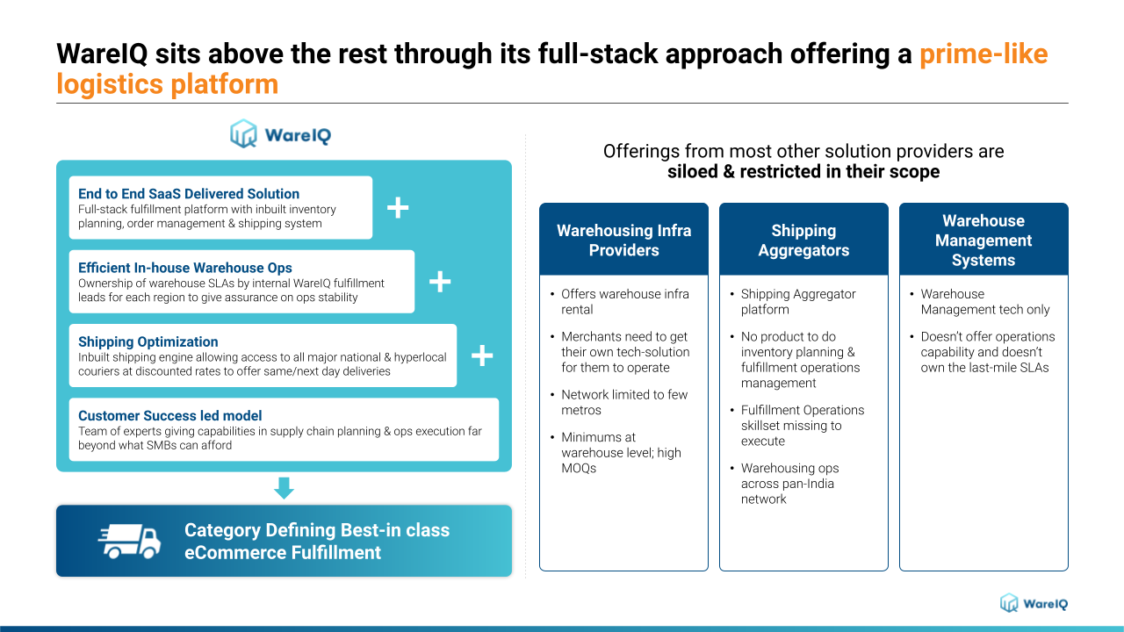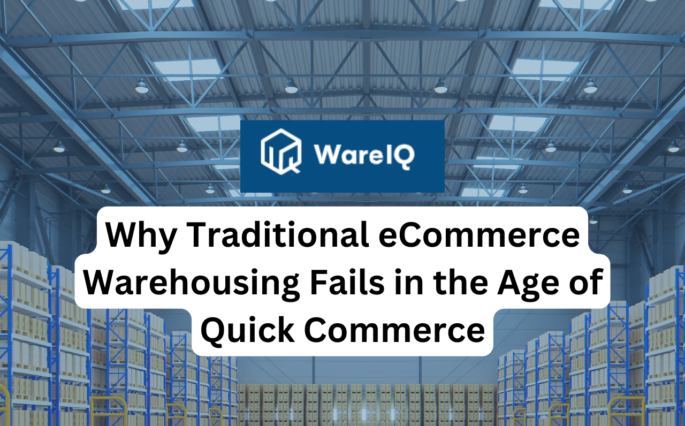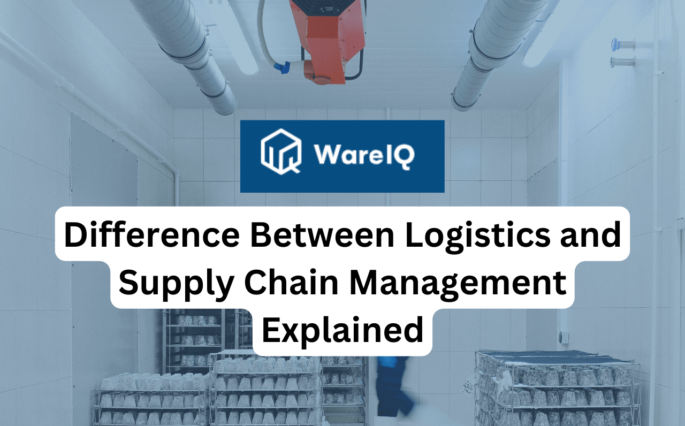What is Order Cycle Time? Meaning, Advantages, Strategies to Improve Customer Order Cycle Time in eCommerce in 2025

In the world of flash sales and deals and same-day delivery in the eCommerce business, some sellers find it difficult to keep up while others find it easier and also save a lot of money in the process. This enables these sellers to serve more customers.
There is a lot of time between when a consumer places an order and when it is actually delivered. Many businesses strive to reduce their order cycle time as much as possible. Understanding your purchase order cycle time and how to apply it to your business can help you control how quickly customers receive their orders. This article explains customer order cycle time, why it’s significant, how to quantify it and what you can do to make it better.
What is Order Cycle Time?
Order cycle time is a key performance indicator (KPI) that measures and takes into account all of the steps and processes that eCommerce operations must go through to fulfill an order after it has been placed by a customer.
Your overall order cycle time will be shorter if your processes are effective and longer if they are ineffective. Understanding your entire order cycle time is crucial because studies have shown that longer customer order cycle times significantly affect a company’s ability to retain clients and get new ones.
WareIQ, an eCommerce fulfillment company, empowers online brands with a superior-tech platform to compete with Amazon like service levels by bringing their average delivery timelines from 5-10 days to 1-2 days.
Advantages of Purchase Order Cycle Time
Tracks Your KPIs
As you know now, order cycle time is a key performance indicator that is used to measure a business’s fulfillment potential. It shows how well you can fulfill an order after getting a customer places it through your website or other selling platforms. Even if your customers are satisfied with the delivery time, you still need to track the monetary expenses you spend so that you further streamline all the processes.
Reduces Travel Times
Reducing the distance travelled to complete a task is one of the easiest methods to reduce order cycle time. Simply doing this can have a significant impact on your efficiency and production because time spent on travelling is time not spent on other value-adding activities. The main factor in the order cycle time is travel. The total purchase order cycle time can be sharply decreased if the distance travelled can be minimized.
By emphasizing early errors and creating more effective pathways, you can achieve this. Your resources will be more productive by securing SKUs based on picking ability. A carton flow rack or shelf can reduce storage space and travel time if all of your SKUs are chosen from pallets and many of them are slow movers.
Helps Forecast ETA
ETA is crucial information for a buyer. Every customer wants to know the ETA of their order before they place it as this can affect their purchasing decisions. An accurate ETA can be conveyed only if the seller has a good idea of their order cycle time and if the ETA is on the lower side compared to the distance the order has to travel, it is believed the order cycle time is working properly.
Detects Incompetencies in the Supply Chain
Identifying the order cycle time of your business might help you spot supply-chain problems that can be delaying your order fulfillment procedure. A lengthy order cycle time is a sign that your supply chain process needs to be reviewed to find any inefficiencies or extra stages that could be eliminated completely or streamlined. For example, a lengthier order cycle time can result from manual order receipts, which can be labor-consuming and error-prone. You can also see how we analyse supply chain metrics.
How can Order Cycle Time be Measured?
The calculation for customer order cycle time is as follows:
Order Cycle Time = (Delivery Date – Order Date) / Total Number of Orders Shipped
Using the above formula, you can calculate the cycle time for customer orders. The following processes are involved in calculating the purchase order cycle time:
- Collect client information
- Subtract the delivery date from the order date
- Divide that by the total number of shipped orders
- Interpret the outcomes
Gather customer information, including delivery and order dates, as well as the total number of shipped orders and enter it into the formula. Some companies keep track of this information in a spreadsheet or client database. You might gather the information you need more quickly with the use of an automated system.
When you get your results, compare them to the objectives of your business. You can pinpoint any areas that need improvement by using this method. You can also keep track of the information, recalculate on a monthly basis and evaluate any advancements.
6 Methods to Reduce Customer Order Cycle Time in 2025
Evaluate And Improve Inventory Flow
Longer order cycle times can often be attributed in a large part to bottlenecks in the warehouse. For example, check whether goods can be located with ease, if the shelving racks are properly spaced apart to allow for quick movement and if the location of your fulfillment bay is too far away from the picking area. The selection and packing process can be slowed significantly by any of these obstacles.
You can shorten the time it takes for an order to be processed by detecting these inefficiencies. Measure your warehouse KPIs first then look for areas where you can make changes. To maximize the use of the available space and increase picking effectiveness, you might need to optimize your warehouse setup and apply warehouse slotting.
Set Strict Rules
Improving your processes depends on your fulfillment personnel being guided by defined rules and processes. To expedite the process and get orders from the shelves to the packing room as soon as possible, you may be required to reduce the size of the picking batches. To make it simple to sort or pick up returned items faster, you can also establish rules for how and where to leave them. Setting restrictions on when to order additional inventory is also crucial for preventing stockouts and backorders which can slow down your order cycle time.
Examine your present delivery management strategy. You should set rules for what to do with the information in the event of delivery exceptions in addition to giving your personnel access to real-time eCommerce order tracking. In order to set reasonable expectations, it’s crucial to be open and honest with your clients regarding your delivery practices, such as shipment cutoff times.
Have a Backup Plan for Late Deliveries
There are many cases where you can face late deliveries because of reasons such as stockouts, inefficiency in the supply chain, technical glitches, etc. So for all these cases, you as a seller must have a checklist of backup plans associated with each situation. You can partner with more than a single fulfillment company, have deals with merchants to dropship automatically in case of a stockout and a WMS that takes care of technical aspects of your fulfillment process.
Constantly Evaluate Your Order Cycle Time
Order cycle times can vary periodically, particularly if the supply chain is altered or disrupted. An unanticipated delivery hindrance, for instance, can cause an order cycle to take substantially longer than is typical. After deploying an automated system to enhance your warehouse receiving procedure, you can observe a significantly reduced order cycle time.
Your supply chain’s entire range of factors can have an impact on this statistic. Your order cycle time needs to be closely monitored and evaluated on a regular basis. By doing so, you can decide whether you need to assess your supply chain procedures and make any accelerated changes. It’s an excellent approach to assess whether the adjustments you’ve made have a positive impact on your customer order cycle time.
Give Incentives to Involved Resources
Order cycle time is something that a seller needs to take constant care of to maintain and try and reduce. It will make no difference to the involved resources whether they fulfill one order a day or 10 orders a day. Giving them an incentive to enhance the quantity and quality of their services, whether it is inventory management, packaging orders or delivering them, as this result in a major reduction in your order cycle time.
Outsource Fulfillment
The simplest solution to reducing your order cycle time is to delegate the fulfillment operation to professionals. Using a third-party logistics partner to outsource fulfillment is a good approach to guarantee that orders are immediately confirmed, chosen, packed and dispatched. A tech-enabled 3PL should enable you to automate a sizable piece of the fulfillment process.
Many 3PLs include technology that easily integrates with your online store. As soon as orders are placed by clients, they are automatically accepted in their warehouses and fulfillment facilities. So, the orders are processed automatically, allowing them to pass rapidly through the fulfillment pipeline and be delivered to your consumers within a few hours. Additionally, by automating the process, less manual work will be required, lowering the possibility of errors while increasing order accuracy.
Conclusion: Reduce Your Order Cycle Time With WareIQ
Reducing order cycle time is a major concern for most eCommerce businesses as it directly impacts their ability to fulfill orders. The best method to reduce your order cycle time is to outsource your fulfillment service requirements to a 3PL company like WareIQ.

WareIQ’s USP is offering Prime-like delivery to everyone but for much lower costs and with more coverage. We offer services like same-day and next-day delivery and oversee your entire logistics process which helps reduce your order cycle time while ensuring that orders are delivered efficiently and on schedule.
Utilizing WMS software, WareIQ allows you to effectively manage multiple orders and decentralized inventory that is located in multiple fulfillment centers at your fingertips while also assisting you in streamlining your fulfillment processes. WareIQ’s integration with multiple eCommerce selling platforms ensures that orders are automatically accepted and processed. Orders can be processed and delivered more quickly as a result, cutting down on fulfillment and delivery delays.
Additionally, we provide real-time inventory level updates. This implies that your online business will always have precise stock level information, preventing customers from placing purchases for items that are out of stock. As a result, backlogs and delayed fulfillment can be avoided by utilizing and optimizing your sales history and precisely forecasting future demand. Setting reorder points for both finished items and product inventory can be done using this data together with additional considerations like the production wait time. By doing so, you can increase supply chain speed and avoid problems like stockouts and backlogs that could lengthen the time it takes to process an order.








